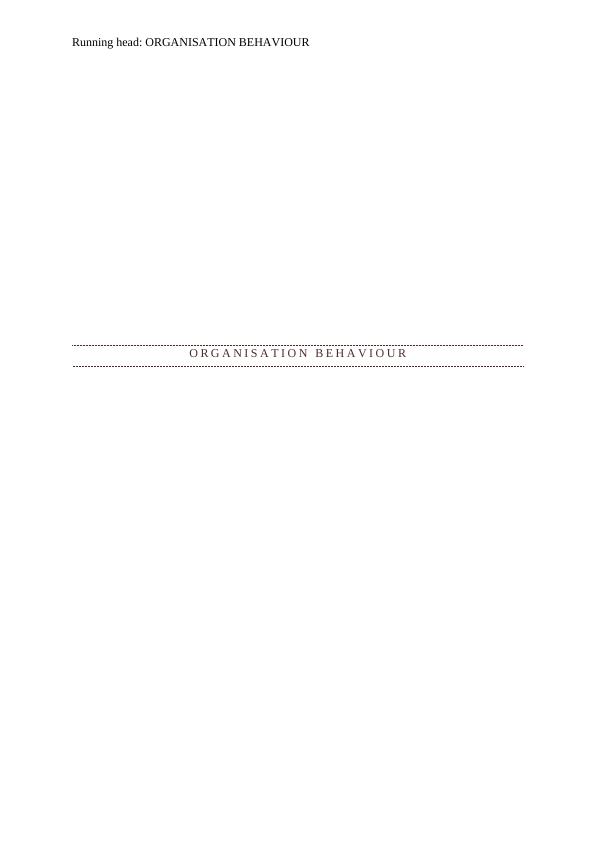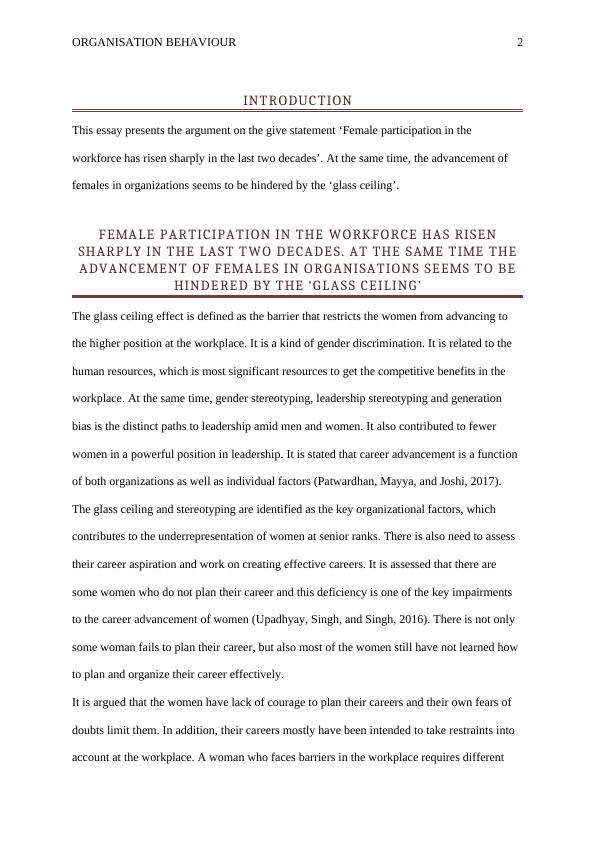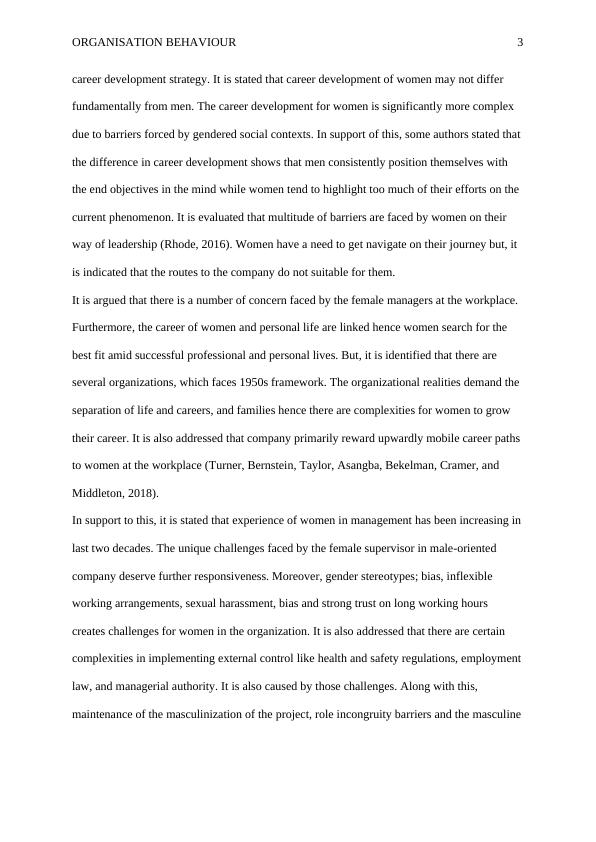Female Participation in the Workforce and the Glass Ceiling Effect
Develop sound academic writing skills by writing an essay on one of the four available topics.
9 Pages2218 Words191 Views
Added on 2023-06-13
About This Document
This essay presents the argument on the give statement ‘Female participation in the workforce has risen sharply in the last two decades’. At the same time, the advancement of females in organizations seems to be hindered by the ‘glass ceiling’.
Female Participation in the Workforce and the Glass Ceiling Effect
Develop sound academic writing skills by writing an essay on one of the four available topics.
Added on 2023-06-13
ShareRelated Documents
End of preview
Want to access all the pages? Upload your documents or become a member.
Glass Ceiling Effect on Women at Work Places
|10
|2416
|425
Gender Diversity in Leadership: Challenges and Strategies
|10
|1609
|437
Gender Discrimination in Workplace in UK
|9
|2827
|140
(PDF) Women in Hotel Management and Leadership
|46
|19446
|452
Women in Leadership: A Discussion on Lean In and Beyond
|3
|742
|287
Thesis Literature Review
|18
|5209
|99



